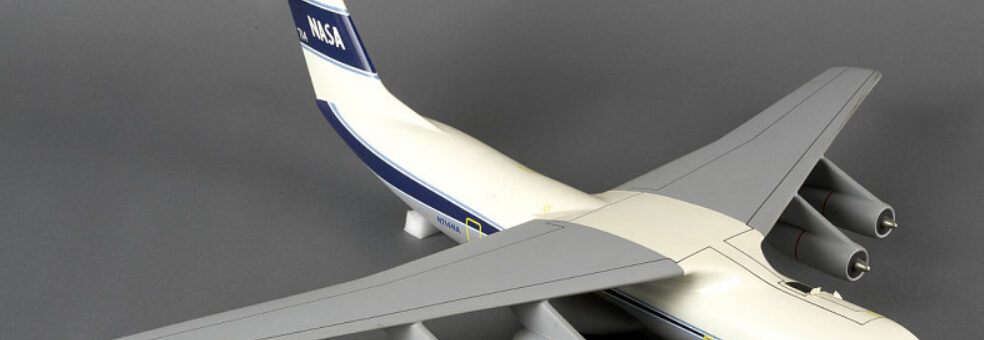
The 50-Year History of the Kuiper Airborne Observatory and the Future of Space Exploration
Did you know that the Kuiper Airborne Observatory (KAO) was converted in 1974 and dedicated on May 21, 1975? It was named after Gerald P. Kuiper, who performed missions in the Galileo observatory, which was a modified Convair 990. The KAO was officially decommissioned in 1995. However, the dismantling of this scientifically important high-altitude observatory didn’t begin until this year. Let’s explore the history of the Kuiper Airborne Observatory and learn about future space exploration missions.
The Kuiper Airborne Observatory (KAO) Conversion
The Kuiper Airborne Observatory was converted from a variant of the C-141 Starlifter in 1974, and it flew missions from 1975 until 1995. The airborne observatory conversion involved installing a 36-inch Cassegrain reflector telescope in front of the wing, while the inside of the aircraft was fitted with various consoles for controlling the telescope and monitoring and recording its observations.
The Cassegrain Reflector Telescope
The Cassegrain reflector telescope that was mounted inside the KAO could make observations in the 1 to 500 um spectrum, which spans the mid-infrared to far infrared spectrum. The Cassegrain telescopes were known for their concave and convex mirrors. The concave mirror was used as the primary reflective surface, and the convex mirror was secondary, only used to reflect the light back through a small hole in the concave mirror. The telescope mounted inside KAO was ideal for observing Earth’s atmosphere, as well as the stars and planets.
Kuiper Airborne Observatory Specifications
The Kuiper Airborne Observatory measured 145 feet from nose to tail. It had a 160-foot wingspan and a range of 6,000 nautical miles. The KAO’s flight crew consisted of two pilots and a flight engineer. The back of the aircraft had space for the mission staff and flight team. The missions were typically flown at altitudes between 41,000 and 48,000 feet, and each mission could last up to 7.5 hours.
Where the Kuiper Airborne Observatory Flew
The Kuiper Airborne Observatory was based at Moffett Field at the Ames Research Center in Silicon Valley. It’s one of NASA’s 10 field centers. The Ames Research Center is responsible for researching and developing new aeronautics and space technologies, and the KAO fits into those parameters. Other US locations included American Samoa, Houston, and Hawaii.
However, the Kuiper Airborne Observatory wasn’t restricted to US operations. During its 20-year history, it also flew missions out of Australia, Brazil, Chile, Ecuador, Guam, Japan, New Zealand, and Panama.
The Discoveries of the Kuiper Airborne Observatory
The Kuiper Airborne Observatory made many astonishing discoveries. It was one of the first telescopes to view the rings of Uranus. It detected the thin atmosphere on Pluto, which expands and contracts in relation to the planet’s proximity to the sun. KAO also discovered frozen water on comets and molecules deep in space, and it took measurements of Mercury’s surface as one of its last missions in 1995.
After KAO, There Was SOFIA
The missions to observe the universe in infrared didn’t end with KAO. Right after KAO was retired, SOFIA was developed and implemented. SOFIA stood for Stratospheric Observatory for Infrared Astronomy. This flying observatory was converted from a Boeing 747SP and retrofitted with an 8.833-foot or 106-inch reflecting telescope. It flew at altitudes between 38,000 and 45,000 feet, which is ideal for studying the solar system.
This infrared observatory was developed and funded via a collaboration between NASA and The German Aerospace Center (DLR). Its primary mission was to observe and record the infrared universe. SOFIA had the ability to view and record the births and deaths of stars, observe the formation of new solar systems, detect and identify complex molecules in space, and observe nebulas, galaxies, planets, asteroids, and comets.
The hope was that SOFIA would fly from 2014 until at least 2034. Unfortunately, its mission was cut short in 2022. NASA cited high operational costs and low productivity for its decommissioning. However, space exploration enthusiasts should know that the decommissioned SOFIA is located at the Pima Air and Space Museum in Tucson.
The Future of Space Exploration
After Sofia, no other aircraft was built or converted to take its place. Instead, other tools were utilized, including the James Webb Space Telescope, which orbits the sun, and the Atacama Large Millimeter/submillimeter Array (ALMA), located in Chile.
Of course, there are more elaborate missions in the works, like the Artemis missions. Artemis plans to return humans to the moon for the long term. The goal of these missions is to thoroughly explore the moon’s surface and learn how to live and work on other planets. The Artemis missions have four phases. Artemis I occurred on November 16, 2022, and was an uncrewed lunar flight test.
Artemis II will launch in April 2026 for a 10-day mission. A four-person crew will fly to the moon aboard the Orion Spacecraft, which is launched from NASA’s Space Launch System rocket. The goal of this mission is to ensure that all of the systems on the Orion Spacecraft operate as intended. Artemis III will occur sometime in 2027. Its goal is to explore the lunar south pole, and finally, Artemis IV will launch the first orbiting lunar space station.
The future of space flight, space exploration, and space stations didn’t end with the retirement of KAO or SOFIA. Instead, it’s expanded to other ground-based and space-based telescopes and space vehicles, and in the future, we really could see people living on the moon and on other planets.
